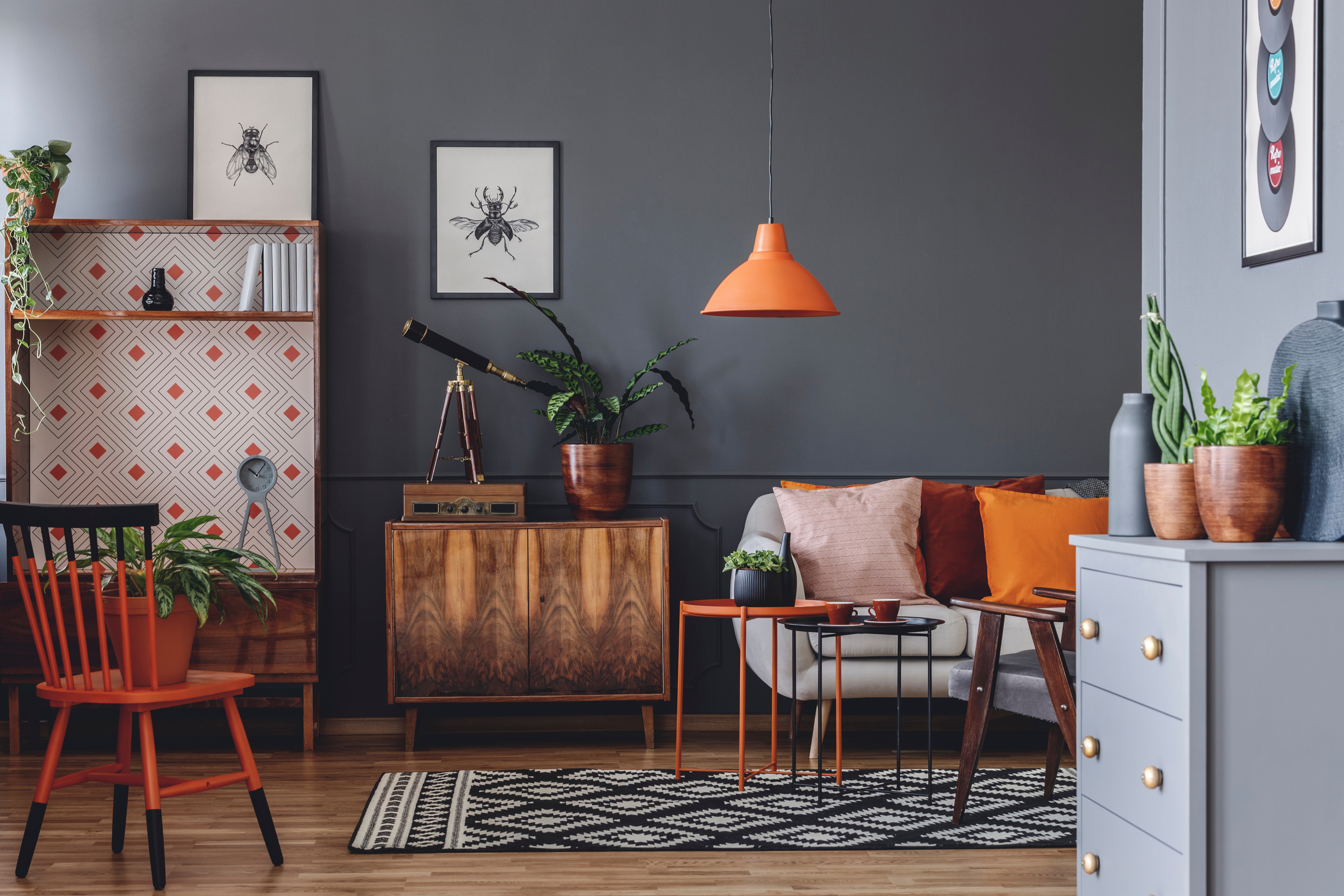The ’70s were a decade of bold expression, eclectic decor, and cozy, conversation-friendly spaces. If you’ve ever admired the warmth of earthy tones, the fun of funky patterns, or the laid-back vibe of a sunken living room, you’re in luck. Interior design ’70s style is making a serious comeback. With a modern twist, today’s take on this iconic aesthetic blends nostalgia with contemporary flair.
But what exactly makes ’70s interior design so unique? Whether you’re looking to fully embrace the vintage look or just add a few nostalgic touches, you can channel the best of ’70s design in a way that feels stylish and livable.
What is interior design ’70s style?

The interior design of the 1970s was all about comfort, self-expression, and mixing different styles and materials. To truly master this aesthetic, let’s break down the key elements that define interior design ’70s style and how you can incorporate it into your home.
Earthy color schemes
The ’70s embraced warm, nature-inspired hues, bringing the outdoors in. Think deep oranges, mustard yellows, avocado greens, and rich browns. These tones created a cozy and inviting atmosphere while grounding the bold patterns and textures popular at the time.
To incorporate this color scheme today, consider painting a feature wall in a warm rust or olive green, or opt for furniture and decor in these signature shades. For a more subtle approach, accessorize with throw pillows, rugs, and artwork in earthy hues.
Bold patterns
Nothing says ’70s like psychedelic prints, geometric shapes, and floral motifs. Whether in wallpaper, upholstery, or curtains, these eye-catching patterns add a playful, dynamic energy to a space.
If you’re hesitant to go all-in with bold, patterned wallpaper, start small with retro-inspired throw blankets or accent chairs. Mixing in some neutral elements can help balance the boldness, making the look feel fresh rather than overwhelming.
Textured surfaces
Texture played a huge role in ’70s interior design, adding depth and visual interest to a space. Shag rugs, macrame wall hangings, velvet upholstery, and natural stone accents were all popular choices.
To bring this look into the present, incorporate a plush, high-pile rug or opt for textured wallpaper. Consider adding a mix of materials like wicker, sheepskin, or rough-hewn wood to create that layered, tactile feel.
Futuristic elements
While much of ’70s decor leaned into nature, there was also a fascination with the space age, reflected in sleek, curvy furniture and unconventional materials. Bubble seats, molded plastic chairs, and futuristic lighting fixtures were all staples of the era.
For a modern take on this trend, look for statement lighting with sculptural or globe-like designs, opt for glossy lacquered furniture, or incorporate retro-futuristic seating with smooth curves and bold colors.
Low-slung furniture
Comfort was king in the ’70s, and that was reflected in low-profile furniture designed for lounging. Sofas and coffee tables sat closer to the ground, creating a relaxed, intimate atmosphere.
To bring this element into your home, choose low-slung sectionals, beanbag chairs, or vintage-style platform sofas. Pair them with a plush area rug to define the seating space and add extra comfort.
Rattan and wicker
Natural materials were a major player in ’70s design, and rattan and wicker furniture were everywhere. These lightweight, airy materials added warmth and an organic feel to interiors, whether in seating, lighting, or decor.
For a subtle nod to this trend, incorporate a rattan pendant light, a wicker accent chair, or woven storage baskets. This look blends effortlessly with bohemian and coastal styles, making it easy to integrate into modern homes.
Midcentury style decor
While the ’50s and ’60s are more closely associated with midcentury modern design, the ’70s continued the trend with sleek, functional furniture featuring clean lines and tapered legs. However, ’70s decor had a softer, more playful edge compared to the earlier decades.
To nail this look, mix classic midcentury pieces with ’70s-inspired accents — think a vintage teak credenza paired with a shag rug or a minimalist coffee table topped with colorful, abstract decor.
Sunken seating areas
One of the most iconic features of ’70s homes was the conversation pit, a sunken area filled with cozy cushions and designed for socializing. While fewer homes are built with this feature today, the concept of a relaxed, intimate seating arrangement is still very much in style.
To mimic this vibe, create a designated lounging space with a sectional sofa, floor cushions, and a coffee table at the center. Use layered rugs and warm lighting to enhance the cozy, inviting feel.
Muted, groovy kitchen colors
Kitchens in the ’70s weren’t afraid of color, but the hues were more muted and earthy than the bright pastels of previous decades. Avocado green, burnt orange, and harvest gold were especially popular.
For a modern approach, incorporate these tones in a more restrained way — think sage green cabinets, amber glassware, or warm terracotta tiles. Pair them with wood finishes and brass hardware to keep the look sophisticated and stylish.
Is ’70s interior design really making a comeback?

Absolutely! While the era’s more extreme elements (like wall-to-wall shag carpeting) may not be returning in full force, many of its core design principles are trending again. Interior design today is embracing warm, earthy tones, natural textures, and retro-inspired furniture. Even patterns and bold wallpaper are back in a big way. This revival isn’t about replicating the past exactly, but rather taking inspiration from the ’70s and incorporating it in a way that feels fresh and timeless.
The interior design ’70s aesthetic is all about warmth, personality, and a touch of nostalgia. Whether you’re drawn to the earthy color palettes, playful patterns, or laid-back furniture, there are plenty of ways to bring this look into your home. The key is to mix retro elements with modern sensibilities, creating a vintage-inspired space that’s also timeless. So, embrace the groovy vibes and make your home a cozy, stylish retreat!




